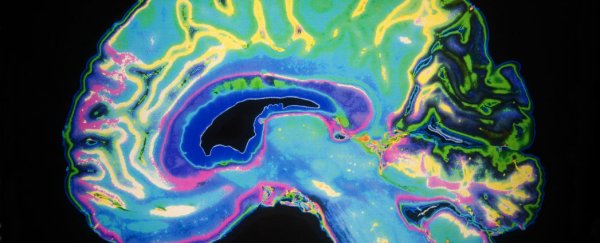Researchers have found what they believe is the part of the brain directly responsible for feelings of happiness, and the discovery could help us tap into these feelings more often. Whether that involves creating more moments of joy and contentment or savouring the moments we have for a longer period of time, we might one day be able to 'train' our brains to hold on to happy feelings.
The team from the University of Wisconsin-Madison in the US experiment involved more than a hundred college students who were sent text messages 25 times a day. The texts asked them to rank their positive and negative emotions on a scale of 1 to 9, both during everyday activities and while playing a specially arranged game with a $15 reward. Forty of the participants were also given MRI scans, allowing the researchers to see which parts of the brain could be associated with feelings of happiness (usually triggered by a $15 windfall).
Psychologist Aaron Heller and his team found that the brain's ventral striatum 'lit up' for the longest time on the MRI scans, indicating that this section of the brain's reward system is directly linked to sustained positive emotions. These findings could help us to better understand depression and mental health, the academics suggest, as well as enabling us to find ways to 'train' the brain to be happier for longer.
"It's important to consider not just how much emotion you experience, but also how long these emotions persist," Heller, who is now assistant professor of psychology at the University of Miami, said in a press release. "We're looking at how one person can savour a great deal from that beautiful sunset or a memorable meal, but how another person who might be susceptible to depression can't savour that sunset and those positive emotions subside quickly."
The team of researchers also found that the duration of activity in the ventral striatum can be used to predict the persistence of positive emotions several hours later. This is an area that of biology that is poorly understood, according to Heller and his team, and a lack of information about these types of emotional response prompted the study in the first place.
What's unique about this particular report, published in the Journal of Neuroscience, is the way it combines a laboratory test with real-world sampling - the students were monitored both inside and outside of the main experiment to see what lasting effects it had.
Richard Dawson, senior author of the new paper, says the findings fit in with previous studies of the ventral striatum, and that eventually psychiatrists could help patients around the clock rather than limiting themselves to a single face-to-face session.
"Most patients spend only one hour per week in psychotherapy," says Dawson. "That's less than 1 percent of their waking time, so the fact that anything changes at all is pretty remarkable. The idea is if we can use cellphone technology to provide similar prompts to help people sustain positive emotion throughout the week, we may be able to create faster changes in brain networks that give rise to improved mood."
